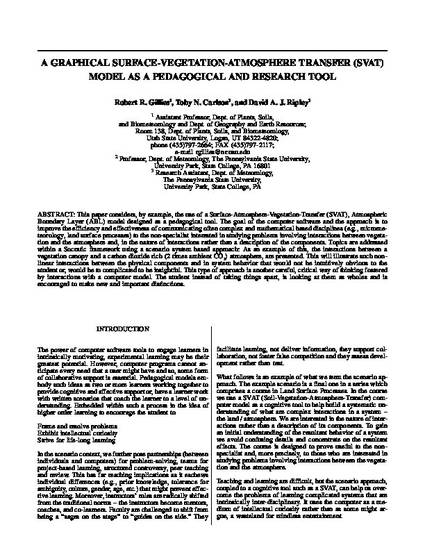
This paper considers, by example, the use of a Surface-Atmosphere-Vegetation-Transfer (SVAT), Atmospheric Boundary Layer (ABL) model designed as a pedagogical tool. The goal of the computer software and the approach is to improve the efficiency and effectiveness of communicating often complex and mathematical based disciplines (e.g., micrometeorology, land surface processes) to the non-specialist interested in studying problems involving interactions between vegetation and the atmosphere and, in the nature of interactions rather than a description of the components. Topics are addressed within a Socratic framework using a scenario system based approach: As an example of this, the interactions between a vegetation canopy and a carbon dioxide rich (2 times ambient CO2) atmosphere, are presented. This will illustrate obvious to the student or, would be to complicated to be insightful. This type of approach is another careful, critical way of thinking fostered by interactions with a computer model. The student instead of taking things apart, is looking at them as wholes and is encouraged to make new and important distinctions.
Available at: http://works.bepress.com/robert-gillies/9/
